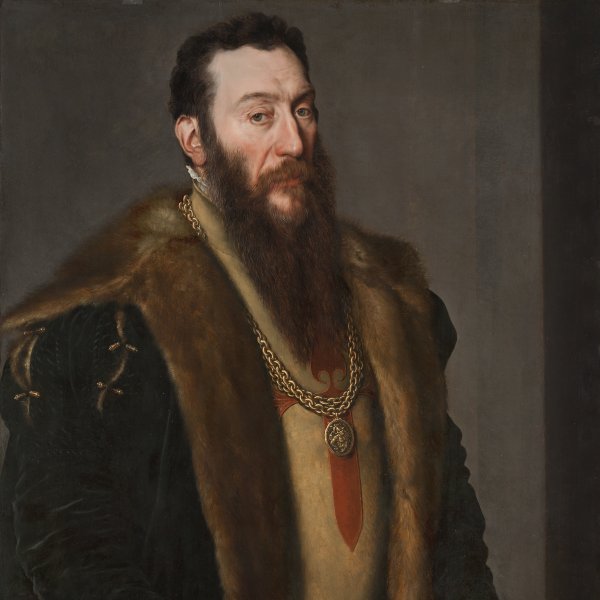Antonis Mor
Utrecht, 1516/20-Antwerp, 1576
Mor trained with Jan van Scorel in Utrecht and was his pupil and assistant around 1540. His early works reveal the influence of his master. As noted by Karel van Mander in his biography of the artist, during his youth Mor travelled to Italy. In 1547 he was working as an independent master in Antwerp and in 1549 was in the service of Cardinal Granvela, Antoine Perrenot, whom he accompanied on official trips and depicted in a portrait now in the Kunsthistorisches Museum, Vienna. Also dating from this period is the Portrait of the Third Duke of Alba (Musées Royaux des Beaux-Arts de Belgique, Brussels). Between 1550 and 1553 Mor visited Spain and Portugal and painted portraits of members of the Spanish royal family. Between 1554 and 1555 he is documented in England where he painted Mary Tudor, second wife of Philip II (Museo Nacional del Prado, Madrid). In late 1554 Mor was appointed official painter to the court of Philip II. Between 1555 and 1559 he was in Brussels and Utrecht while between 1559 and 1561 he was again in Spain, where he painted Doña Juana of Austria (Museo del Prado). From 1561 until his death Mor lived between Utrecht and the southern Low Countries.
Mor’s years in Spain were crucial for the evolution of the court portrait, and his style was assimilated by his follower, the great portraitist Alonso Sánchez Coello. Mor captured the formality of Spanish court etiquette, depicting its members with distance, austerity and majesty. His depictions of the Spanish monarchs, such as Philip II (monastery of El Escorial), omit any use of symbolism to indicate the sitter’s status and focus entirely on the physical presence. During his last years Mor also depicted merchants, artists and intellectuals from the humanist circles in which he moved. His last known work is a portrait of Hubert Goltzius, painter, numismatist and a personal friend of Mor’s, executed in 1573–74 (Musées Royaux des Beaux Arts de Belgique, Brussels).
Mor’s years in Spain were crucial for the evolution of the court portrait, and his style was assimilated by his follower, the great portraitist Alonso Sánchez Coello. Mor captured the formality of Spanish court etiquette, depicting its members with distance, austerity and majesty. His depictions of the Spanish monarchs, such as Philip II (monastery of El Escorial), omit any use of symbolism to indicate the sitter’s status and focus entirely on the physical presence. During his last years Mor also depicted merchants, artists and intellectuals from the humanist circles in which he moved. His last known work is a portrait of Hubert Goltzius, painter, numismatist and a personal friend of Mor’s, executed in 1573–74 (Musées Royaux des Beaux Arts de Belgique, Brussels).





